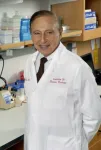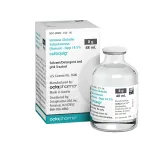Quantifying genetic variations in bacterial cultures the qSanger way
Researchers propose a novel, practical methodology called qSanger, that can easily quantify DNA and identify genetic variations in cultured bacteria
2023-03-06
(Press-News.org)
Genetic variations, such as mutations, recombinations, or transpositions occur naturally in cultured microorganisms and are often considered nonneutral mutations. Neutral mutations are neither beneficial nor harmful to an organism and only affect a small proportion of the total population. On the other hand, nonneutral mutations can affect a larger proportion of the population by potentially changing the gene pool, depending upon the advantages or disadvantages provided by the genetic variant. These mutations can be quantified genotypically using different sequencing methods. Quantitative polymerase chain reaction (qPCR) is considered an effective sequencing method to measure individual genetic variants. However, it can be expensive and time-consuming. In contrast, Sanger sequencing is fast and cost-effective, but its accuracy falls short in quantifying mutations in plasmid mixtures derived from a heterogeneous population.
Since neutral mutations can become dominant due to changing environmental conditions, resulting in transitory selection or counterselection, it is important to accurately assess ratios of mutated and wild-type DNA sequences. Moreover, such DNA quantification could improve the early diagnosis of diseases and effective drug development. Consequently, a team of researchers from Europe have devised a novel method—qSanger, to quantify genetic variants and identify neutral/nonneutral mutations. “The qSanger methodology proposed in our study uses data from Sanger sequencing to measure the ratio of genetic variations in a bacterial culture,” says Prof. Alfonso Jaramillo, who is affiliated with the University of Warwick and Keele University and is the corresponding author of the study. This study was published in Volume 5 of BioDesign Research on February 7, 2023.
First, the team used Top 10 competent cells of Escherichia coli (E. coli), which were aerobically cultured in the presence of antibiotics. The bacterial colonies were co-transformed with two plasmids—P1 and P2. Next, they used Sanger sequencing to generate an electropherogram with multiple traces for the bacterial colonies co-transformed with P1 and P2. The two plasmids were also individually sequenced. Thereafter, traces from the P1 and P2 sequences were aligned with the mixed P1:P2 traces. Finally, they applied the qSanger method to quantify the plasmid DNA, using amplitude ratios of the aligned electropherogram peaks from mixed Sanger sequencing reads.
To easily measure the plasmid ratios, the team used distinct fluorescent markers with two plasmid constructs—mCherry (red) in P1 plasmid and enhanced green fluorescent protein (EGFP) in P2 plasmid. These fluorescence-expressing plasmids also helped validate the qSanger method both, in-vitro and in co-transformed bacteria using standard DNA quantification methods. First, they validated the qSanger method by measuring the plasmid DNA ratio in different mixtures of P1- and P2-only cells. Next, the team evaluated P1:P2 ratios in co-transformed E. coli cells using qPCR and fluorescence quantifications. In both cases, the P1:P2 ratio computed with the qSanger method correlated with the other plasmid DNA ratios.
These results demonstrate the accuracy of the qSanger methodology in quantifying genetic variants in cells from mixed Sanger sequences, proving that its efficacy is comparable to other DNA quantification approaches. However, what makes this methodology stand out against technologies like qPCR and digital droplet PCR are its ease of use and significantly reduced costs and labor. Discussing the potential applications of this novel approach, Prof. Jaramillo says, “Our methodology could be used to analyze mutant/nonmutant DNA ratios in cell populations after different implementations of gene editing, including base editing, prime editing, and promoter engineering by multiplex automated genome engineering. Furthermore, it could be used in applications requiring quantification of multiple DNA or RNA sequences in the same mixture.”
Given the growing applications of DNA sequencing in different fields, the qSanger methodology might just push the envelope for accurate, time-saving and cost-effective DNA assessments.
###
Reference
Authors
Satya Prakash1, Adrian Racovita2, Teresa Petrucci3, Roberto Galizi4, and Alfonso Jaramillo1,2
Affiliations
1School of Life Sciences, University of Warwick, UK
2De Novo Synthetic Biology Lab, I2SysBio, CSIC-University of Valencia, Spain
3Department of Biotechnology, Chemistry and Pharmacy,
University of Siena, Italy
4Centre for Applied Entomology and Parasitology, School of Life Sciences, Keele University, UK
About Professor Alfonso Jaramillo from the University of Warwick
Dr. Alfonso Jaramillo is an Honorary Professor of Synthetic Biology at the School of Life Sciences, University of Warwick. He is a theoretical physicist with a PhD in Particle Physics. His interests lie in engineering new forms of life for useful, disruptive purposes. His research is focused on the de novo engineering of living systems to perform complex tasks. He has also worked on computational design methods for metabolic, transcriptional, and RNA networks, and has developed a novel gene regulation relying on RNA. Additionally, Prof. Jaramillo is credited with developing cell-culture bioreactors that were used to engineer the first synthetic bacteriophage.
END
ELSE PRESS RELEASES FROM THIS DATE:
2023-03-06
The recent public health emergency declarations in New York and London due to polio infections and detection of the virus in these cities’ wastewater strongly indicate that polio is no longer close to being eradicated.
Now, four members of the Global Virus Network (GVN) proposed changes in global polio eradication strategy to get the world back on track to one day eliminating polio’s threat. Authors of the recommendations included University of Maryland School of Medicine Institute of Human Virology’s ...
2023-03-06
SAN ANTONIO — March 6, 2023 —A Southwest Research Institute team has developed a mechanical testing device to analyze fluids and lubricants formulated for electric vehicles. The team modified a commercial tribology testing device to give it the capability to evaluate the impact of electric currents in fluids, measuring the wear and friction on the automobile parts in the presence of an applied voltage.
“The electrification of the automotive industry has accelerated over recent years, ...
2023-03-06
Fetal alcohol exposure at any stage of pregnancy can lead to congenital malformations, as well as cognitive, behavioral, and emotional impairments in offspring. New research conducted in mice and published in The FASEB Journal indicates that even very early embryos exposed to alcohol can experience growth restriction, brain abnormalities, and skeletal delays, but feeding pregnant mothers certain nutrients prior to conception and throughout pregnancy can reduce the incidence and severity of the alcohol-induced defects.
The beneficial effects were seen with a combination of four nutrients—folic acid, choline, betaine, and vitamin B12.
The authors stress that the ...
2023-03-06
What explains persistent racial disparities in policing, despite police departments’ repeated investments in bias-training programs? A wide range of data indicate that police in the United States tend to stop, arrest, injure, or kill more Black people than White people. Calvin K. Lai (Washington University in St. Louis) and Jaclyn A. Lisnek (University of Virginia) analyzed the effectiveness of a day-long implicit-bias-oriented diversity training session designed to increase U.S. police officers’ knowledge of bias, concerns about bias, and use of evidence-based strategies to mitigate bias. Their ...
2023-03-06
March 6, 2023-- The adoption of laws around naloxone use is not associated with changes in adolescent lifetime heroin or injection drug use (IDU), finds a new study at Columbia University Mailman School of Public Health. According to latest results, naloxone access and pharmacy naloxone distribution were more consistently associated with decreases rather than increases in lifetime heroin and IDU among adolescents. While some critics contend that naloxone expansion may inadvertently promote high-risk substance use behaviors among adolescents, until now this question had not been directly investigated. The ...
2023-03-06
DALLAS, March 6, 2023 — What people eat and drink affects heart and brain health and is essential for managing health conditions like blood pressure, diabetes and high cholesterol. Hispanic adults are at higher risk for Type 2 diabetes and have some of the highest prevalence of poorly controlled blood pressure,[1] two major risk factors for heart disease.[2] As a champion for health equity, today the American Heart Association, the leading global voluntary health organization dedicated to fighting heart disease and stroke for all, launched ‘Together at the Table/ Juntos En La Mesa.’
The campaign is designed to inspire ...
2023-03-06
NEW YORK, March 6, 2023—With the COVID-19 pandemic highlighting the critical importance of biomedical research and new questions being raised about society’s capacity to generate world-changing scientific breakthroughs,1, Roy and Diana Vagelos have made a $175 million gift to Columbia University to address this need. The Vagelos Institute for Biomedical Research Education created with this gift will be home to PhD students pursuing the most creative, potentially disruptive ideas in biomedical science, and will spur the training of more physician-scientists able ...
2023-03-06
DALLAS, March 6, 2023 — Scientific researchers have noticed a marked increase in heart attacks and strokes in the days following the change to daylight saving time each spring. However, the American Heart Association, the leading global health organization dedications to fighting heart disease and stroke, says losing sleep anytime can be a major risk factor for cardiovascular disease.
“Getting a good night’s sleep every night is vital to cardiovascular health. Adults should aim for an average of 7-9 hours, and babies and kids ...
2023-03-06
In the fight against pollution, several regions in the U.S. have banned the use of plastic straws. Alternative materials exist, but most options are either too expensive to scale up, go limp in drinks or taste bad. But now, a team reporting in ACS Omega has developed a new type of bioplastic film from all-natural, degradable materials that can be rolled into a straw that doesn’t get soggy and is stronger than plastic.
As efforts to reduce plastic waste take hold, many researchers and companies have turned to plastic alternatives to fabricate straws that comply with new laws and regulations. But so far, most options either end up breaking ...
2023-03-06
PARAMUS, N.J. (March 6, 2023) – Octapharma USA presented research at the American Academy of Allergy, Asthma & Immunology (AAAAI) Annual Meeting evaluating the efficacy and safety of cutaquig® (Immune Globulin Subcutaneous [Human]-hipp, 16.5% solution) infusions at higher infusion parameters, potentially offering greater dosing flexibility for patients.
Subcutaneous immunoglobulin (SCIG) has been an accepted mode of infusion for over 30 years and, with its increased utilization, improvements in methodology now drive replacement therapy in patients with primary immune deficiency. To further explore dosing flexibility with potential reductions ...
LAST 30 PRESS RELEASES:
[Press-News.org] Quantifying genetic variations in bacterial cultures the qSanger way
Researchers propose a novel, practical methodology called qSanger, that can easily quantify DNA and identify genetic variations in cultured bacteria




